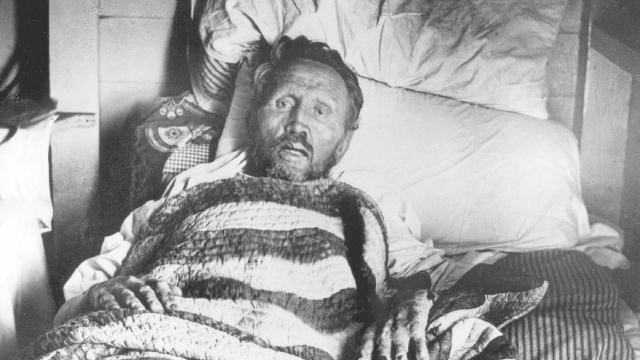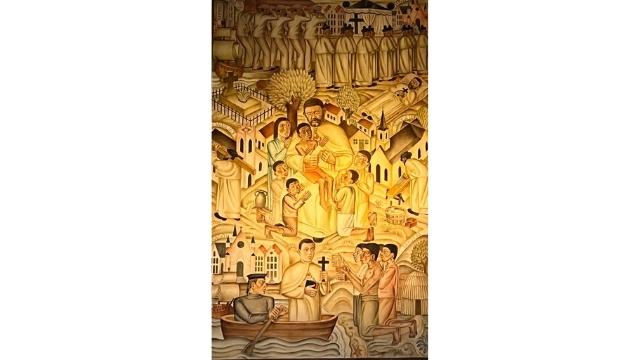The story of the lepers’ colony of Molokai, Hawai’i, shows that living together in peace is impossible when conscience is forgotten. The lesson also applies to the Tai Ji Men case.
by Massimo Introvigne*
*A paper presented at the webinar “Living Together in Peace with Tai Ji Men,” co-organized by CESNUR and Human Rights Without Frontiers on May 16, 2022, United Nations International Day of Living Together in Peace.

May 16 is the United Nations International Day of Living Together in Peace. We need an international day for this because living in peace together is not easy. It is not easy internationally. It is not easy among citizens of the same country. It is not easy within smaller communities.
Earlier this month, I visited the city of Leuven, in Belgium, where an international conference on freedom of religion or belief was held. In two sessions, the Tai Ji Men case was discussed by both scholars and dizi.
It was a busy conference but between the last session and the conference’s final dinner I found the time to visit the chapel in Leuven where Father Damien De Veuster (1840–1889), whom the Catholic Church has canonized as a saint, is buried, and the story of his life is told through panels and pictures.

I very much wanted to see the Leuven chapel because, when I was a child, the 1959 Spanish movie “Molokai: The Cursed Island” was a great favorite in the Catholic schools I attended. There has been a high-budget remake in 1999, with famous international actors, but I still prefer the black-and-white version of 1959.
The story of Father Damien is a very powerful example of the principle that living together in peace is only possible if conscience as the moral compass is followed by all.
Until as late as 1969, the United States confined those suffering from leprosy, today known as Hansen’s disease, to a colony in the inaccessible Kalaupapa peninsula of the island of Molokai, in the Hawaiian archipelago. The peninsula has on one side some of the highest sea cliffs in the world, and on the other side inaccessible mountains. It served as a natural prison, from where it was impossible to escape.
Lepers (I use this term as it was common at that time) were dumped there and, although they were periodically supplied with what was needed to survive, they were largely left to their own devices. Also based on false notions about the contagiousness of leprosy, very few visitors were allowed on the colony, and those who stayed for more than a few days were not allowed to leave.
One of the visitors was the famous American writer Jack London (1876–1916), who before running away called “Molokai” (in fact, the colony was in a part of Molokai only) “the pit of hell” and “the most cursed place on earth.”
Enter Father Damien De Veuster, a Belgian Catholic priest who decided he wanted to go to Molokai and live with the lepers. He arrived there in 1873, knowing he would never be allowed to leave. He contracted himself leprosy in 1884, and died in Molokai in 1889.

What is, I believe, valuable in the 1959 movie is that it resisted any attempt to idealize the life of the lepers in Molokai. One may naively imagine that those sharing a common life of suffering would live together in solidarity or at least in peace. This was not the case. There was no police in Molokai, and many lepers (not all) decided that, since society had rejected them, they were not bound by society’s laws. Life in the colony was dangerous. Alcohol made its way into the peninsula, and violence and sexual abuse were serious problems.
Jesus healed several lepers, and in the Gospel leprosy also had a symbolic meaning, as it indicated what is fragile and dangerous in the human condition. As historians have recognized, it was the cruelty of a society that dumped them as if they were human garbage that created the problems of the Molokai colony. Yet, what I want to emphasize today is that without anybody calling them to act with conscience, the lepers, or many of them, lost the connection with their inner moral compass and even the most elementary respect of basic laws disappeared.

It was patiently restored by Father Damien who not only assisted the lepers in their suffering but called them to remember their conscience, realize they were also children of God, and act accordingly. In the end, the lepers of Molokai really learned to live together in peace: so much so that, when the colony was closed in 1969, some of the colonists decided to remain there. The “cursed island” had become a place they liked to call home, thanks to the conscientious revolution started by Father Damien.
The lesson of this story is that living together in peace cannot be taken for granted. Even those who share a misfortune can ultimately not be able to live in peace together unless they discover again the role of the conscience.

This is precisely what Tai Ji Men and their founder Dr. Hong Tao-Tze keep teaching all around the world: living together in peace is possible only through conscience. Their call to a world of love and peace and their call to conscience are not separated. In fact, they are one and the same.
This call also apply to where most of them were born, Taiwan. Living together in peace is only possible by acknowledging conscience and act with conscience. The painful experience of Tai Ji Men dizi is that they were not allowed to live together in peace with other Taiwanese and their own government because they encountered a prosecutor and bureaucrats who were not guided by conscience.

Unlike the lepers of Molokai, the bureaucrats were not led to their bad conduct by some who compelled them to live in a hostile environment. They became “moral lepers” on their own, according to an old English expression that is no longer regarded as appropriate, as it may be offensive to those who suffer of real, physical Hansen’s disease, “leprosy.”
But it remains also true that order can be restored by returning to conscience. Let’s hope this will really happen in the Tai Ji Men case.
Source: Bitter Winter

